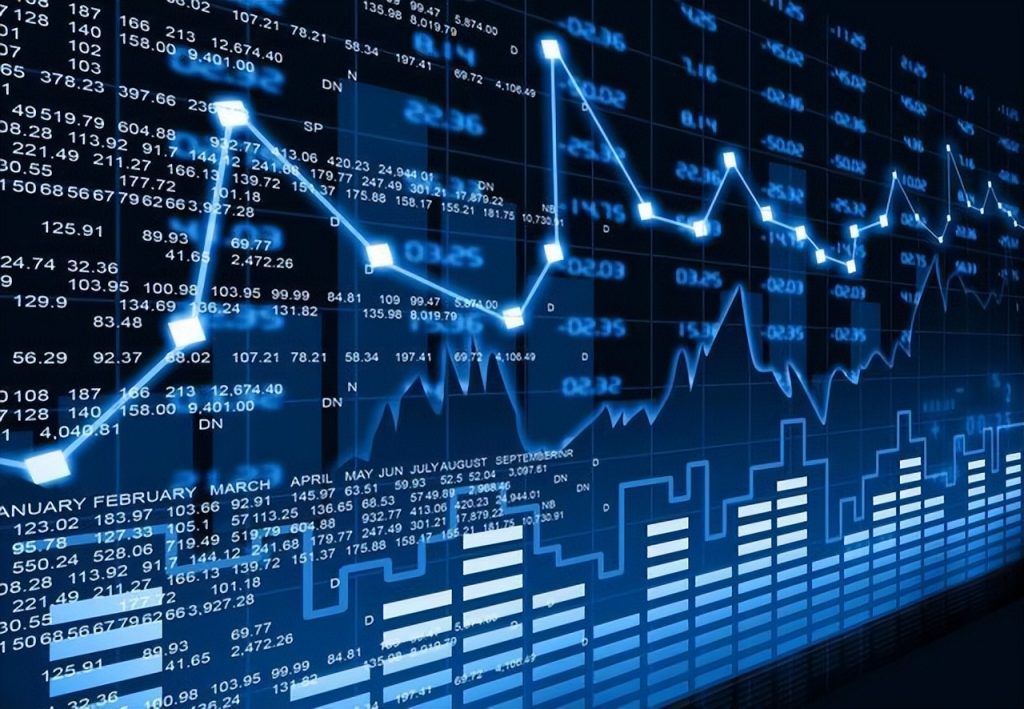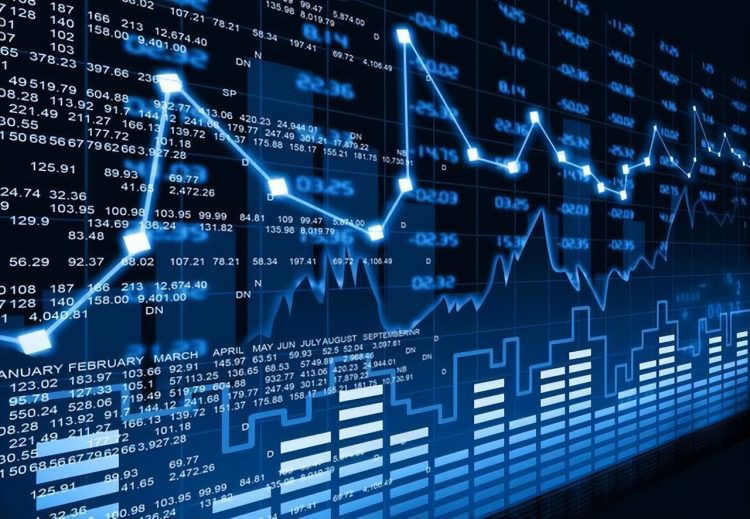Introduction
In recent years, global stock markets have experienced significant volatility. The fluctuations in stock prices, both upward and downward, have become more frequent and extreme, raising questions about the underlying causes of this turbulence. Whether due to macroeconomic factors, political instability, or unprecedented global events, the volatility of stock markets can have profound effects on investor confidence, economic stability, and even the global financial system. This article will explore the key factors driving the recent volatility in global stock markets, with a focus on economic indicators, geopolitical developments, market sentiment, and technological advancements.
Section 1: The Basics of Stock Market Volatility
1.1 What is Stock Market Volatility?
Stock market volatility refers to the degree of variation in the price of stocks over time. High volatility means that stock prices fluctuate significantly in a short period, while low volatility indicates that stock prices are relatively stable. Volatility is often measured by the volatility index (VIX), a popular indicator used to gauge market risk.
1.2 Types of Volatility
- Short-term Volatility: This occurs due to immediate news or events such as earnings reports, quarterly results, or political developments.
- Long-term Volatility: This results from more fundamental factors, such as changes in the economic cycle, long-term market trends, or shifts in investor sentiment.
Section 2: Macro-Economic Factors Driving Volatility
2.1 Interest Rates and Monetary Policy
Central banks around the world, particularly the U.S. Federal Reserve, play a significant role in stock market movements. Interest rate decisions made by these institutions directly impact the cost of borrowing, corporate profits, and consumer spending. When central banks raise interest rates to control inflation, it can lead to stock market sell-offs as investors shift to safer assets like bonds. Conversely, when rates are cut, stock prices may rise due to increased liquidity and lower borrowing costs.
Case Study: The U.S. Federal Reserve’s Role
In 2020, during the early stages of the COVID-19 pandemic, the U.S. Federal Reserve cut interest rates to near-zero levels in an attempt to stimulate the economy. This move initially led to a massive recovery in U.S. stock markets, as investors anticipated lower borrowing costs and increased economic activity. However, as the economy began to recover, concerns over rising inflation led to fears of rate hikes, which contributed to market volatility in 2021.
2.2 Inflation and Deflation
Inflation is one of the most critical factors in driving stock market volatility. Rising inflation erodes purchasing power, and when it exceeds expectations, it can result in a decline in consumer spending and corporate profitability. Investors may react by selling stocks, especially those in sectors sensitive to inflation, such as consumer goods and utilities.
Conversely, deflation, or falling prices, can signal an economic slowdown, which also contributes to market instability. The balance between inflation and deflation is key to understanding stock market trends.
Case Study: The Inflation Surge in 2021-2022
In 2021, inflation in the U.S. reached levels not seen in over 40 years, primarily driven by supply chain disruptions, rising commodity prices, and pent-up consumer demand following pandemic restrictions. This inflation surge triggered massive volatility in global stock markets, as investors became uncertain about the future trajectory of interest rates and corporate profits.
Section 3: Geopolitical Events and Their Impact on Global Markets
3.1 Political Instability and Market Reactions
Geopolitical tensions, elections, and changes in government policies can have a dramatic effect on market sentiment. Political uncertainty, especially in large economies such as the U.S., China, or the European Union, often leads to short-term volatility as investors adjust to the potential risks posed by these events.
Case Study: The 2016 U.S. Presidential Election
The U.S. Presidential Election of 2016 marked a period of significant uncertainty in global stock markets. The election of Donald Trump was unexpected by many investors, and concerns over potential policy shifts, trade wars, and the future of international agreements triggered sharp market movements.
3.2 Trade Wars and Tariffs
Trade wars, such as the ongoing U.S.-China trade tensions, have added significant volatility to global stock markets. The imposition of tariffs on imports or exports can disrupt global supply chains, increase the cost of goods, and reduce corporate earnings. These effects are felt not only in the countries directly involved but also in the broader global market.
Case Study: The U.S.-China Trade War
In 2018-2019, the trade war between the U.S. and China resulted in fluctuating stock markets as both countries imposed tariffs on each other’s goods. Companies with international supply chains, such as tech giants and automobile manufacturers, saw their stock prices drop as a result of the uncertainty surrounding the global trade environment.
Section 4: Technological Advancements and Market Dynamics
4.1 The Rise of Algorithmic Trading
Algorithmic trading, or the use of computer algorithms to automatically buy and sell stocks based on pre-set conditions, has become one of the most significant factors influencing stock market volatility. While it helps to increase market efficiency and liquidity, algorithmic trading can also amplify price movements, especially during periods of market stress.
4.2 The Role of Retail Investors
The rise of retail investing, powered by platforms like Robinhood, has introduced new dynamics into the market. Individual investors now have more access to trading tools, which means that stock prices can be influenced by large volumes of small transactions. The GameStop short squeeze of 2021 is a prime example of how retail investors can collectively drive stock prices to unexpected highs, leading to significant volatility.
Section 5: The Role of Global Events in Amplifying Market Volatility
5.1 The COVID-19 Pandemic
The COVID-19 pandemic serves as one of the most disruptive global events in modern history, with far-reaching effects on the stock market. The sudden economic shutdowns, massive government stimulus packages, and lockdown measures led to severe market fluctuations in 2020, causing a massive crash in March 2020 followed by a sharp recovery in the latter half of the year.
Case Study: The COVID-19 Crash and Recovery
In early 2020, stock markets around the world plummeted due to fears of the pandemic’s economic impact. However, after governments worldwide implemented fiscal stimulus programs and central banks slashed interest rates, markets recovered, driven by investor optimism about future economic rebounds. This volatility, fueled by uncertainty, was a direct result of the global health crisis.
5.2 Natural Disasters and Climate Change
Natural disasters, such as hurricanes, wildfires, and floods, can disrupt business operations, cause widespread destruction, and affect the supply chain, leading to market volatility. Similarly, long-term environmental concerns such as climate change are beginning to impact industries that are highly vulnerable to extreme weather events, including agriculture, insurance, and energy.

Section 6: Psychological Factors and Market Sentiment
6.1 Investor Sentiment and Fear
Investor sentiment plays a significant role in driving stock market volatility. Human emotions, particularly fear and greed, can lead to irrational market behavior. During times of uncertainty, fear can trigger mass sell-offs, while periods of optimism can result in speculative bubbles.
Case Study: The 2008 Financial Crisis
The 2008 financial crisis saw extreme volatility, driven by a loss of confidence in the financial system. The collapse of Lehman Brothers and the subsequent credit freeze led to widespread panic, with stock markets around the world experiencing severe declines. Investor fear and uncertainty fueled the crisis, demonstrating how psychological factors can amplify volatility.
Section 7: Conclusion
The volatility of global stock markets is driven by a complex interplay of economic, geopolitical, technological, and psychological factors. Understanding the underlying causes of this volatility can help investors make more informed decisions and navigate the uncertainties of the financial markets. While short-term fluctuations are often unpredictable, long-term market trends can provide valuable insights into the health of the global economy.
By keeping an eye on key economic indicators, political developments, technological advancements, and market sentiment, investors can better position themselves to manage risk and seize opportunities in an increasingly volatile world.
Final Thoughts
This article provides a comprehensive overview of the factors driving global stock market volatility. With the growing complexity of the global economy and the increasing interconnectedness of markets, understanding these factors will be crucial for investors, policymakers, and economists alike in the years to come.
















































